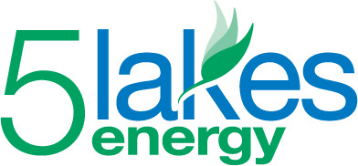As the legislature and Governor’s office in Lansing consider changes to Michigan’s energy policy, there is one area upon which there should be consensus: the current extremely successful “Energy Optimization” policy for utility energy efficiency programs should be reinforced and expanded. Yet remarkably, Michigan’s energy optimization may be repealed.
The data on Michigan’s current PA 295 energy optimization program is clear and compelling. The most recent assessment by the Michigan Public Service Commission (MPSC), released on February 13, 2015 showed that Michigan’s energy optimization programs saved ratepayers $3.75 for every dollar spent. Energy efficiency programs also put downward pressure on commodity and energy prices, help limit fuel price volatility and avoid GHG emissions.
There is no downside; consuming energy more efficiently wins on all fronts.
The recently released report by the Institute for Energy Innovation (IEI) – Barriers to Advanced Energy in Michigan – focuses first on reducing energy waste as “the most cost-effective, least expensive and most readily available means to reduce energy usage and the cost of energy.”
Energy efficiency programs, conservation programs and energy management technologies have become important energy system resources, providing quantifiable and marketable benefits by reducing loads and lessening peak demand as well as deferring or eliminating expenditures for other generation and distribution infrastructure.
In addition to the utility system and ratepayer benefits, there are also important benefits to the local economy. Energy efficiency measures are typically offered by local energy efficiency businesses and the energy savings that result are spent locally, boosting economic activity within communities. The more energy efficiency measures implemented, the more measurable benefits accrue to homeowners, businesses and communities.
A recent study concluded that every $1 dollar expended on energy efficiency programs resulted in an additional $0.80 in economic output within the local community. Unlike expenditures for electricity from centralized power plants or natural gas fuel supplies that are consumed, energy efficiency results in savings drawn directly from improvements made in Michigan homes and businesses that are local, concrete and enduring. Energy efficiency measures are place-based improvements, installed by skilled workers, and using materials supplied by local businesses. No other energy resource so directly supports Michigan’s economy and its people.
Jim Dulzo at the Michigan Land Use Institute has done a great job showing the stream of benefits that will accrue to Holland, Michigan as a result of its ambitious Community Energy Plan that aims to reduce the community’s energy usage by more than half in future years.
For businesses, more energy efficiency translates into lower costs and greater energy productivity. Energy efficiency provides a meaningful and cost effective means of reducing energy intensity – enabling Michigan businesses to achieve the same or greater economic performance at a lower level of energy consumption. Reducing the unit cost of production makes manufacturers more competitive and lowers their carbon footprint – a targeted objective among a growing number of businesses.
But instead of bolstering Michigan’s energy optimization programs, the unthinkable may occur: The Michigan legislature may terminate what are Michigan’s most successful energy programs.
The IEI report has a series of recommendations that, if followed, would make Michigan a much more energy efficient state, boosting Michigan’s economy in measurable ways. The identified measures are common sense steps that many other states – red and blue alike – have already implemented:
- Increase Michigan’s energy optimization standard and eliminate the cap on utility expenditures for energy optimization programs.
- Recognize demand response and energy efficiency as energy system resources, allowing full participation in energy and capacity markets.
- Promote smart metering, time of use rates, and behavioral energy conservation strategies combined with ratepayer education programs to optimize system benefits.
- Reinstitute revenue decoupling to eliminate the linkage between energy sales and utility revenue and profit.
- Establish MPSC goals and objectives for demand side management programs and peak reduction targets within all ratepayer classes – industrial, commercial and residential; work with demand-side aggregators and home energy management system providers to enable load shifting and peak shaving.
- Promote adoption of building energy management systems, continuous commissioning, smart sensors and automated controls.
- Strengthen and improve building codes to encourage energy efficiency, adoption of advanced energy systems, and grid integration of distributed generation and electric vehicles.
- Significantly increase performance contracting for governmental and institutional buildings.
- Expand financing options for energy upgrades, including Property Assessed Clean Energy (PACE), on-bill financing (OBF) and on-bill repayment (OBR) programs, revolving loan funds, credit enhancements, performance contracting, and other tools.
- Remove accounting barriers that “silo” electricity and natural gas savings by allowing for alternate credits based on overall energy intensity/ energy consumption.
This week, the Mi-EIBC will be sending a letter to policymakers urging them to maintain the EO standard. If you would like your business added to the letter, please send an e-mail to lclark@5lakesenergytest.flywheelsites.com with your business and the name of the individual signing. Thank you for your engagement on this important issue.
by Skip Pruss, Co-Founder and Principal
5 Lakes Energy LLC
posted Monday 3/2/2015
